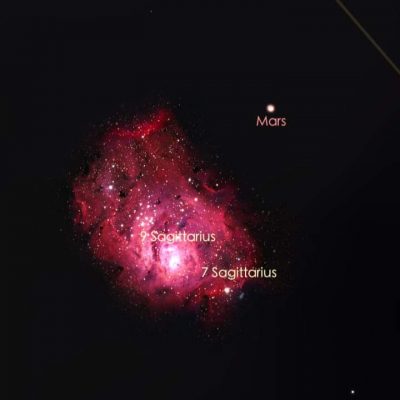Also known as space junk, orbital debris, or space trash, it is a collection of man – made objects orbiting in space. All of this was part of mankind’s explorations into space, and much of it was made up of bits and pieces of material that formed when man-made objects collided with other solar objects. It is all about size, some ranging from 0.4 inches to 4 inches in size, and is estimated to contain 170 million objects in space. Often space junk is also the site of crashed rockets and satellites
Earth’s orbit
The Earth’s orbit is divided into three distinct regions. Low Earth Orbit (LEO) is located between 125 and 1,250 miles from Earth. The junk in this area affects the Earth’s atmosphere, changing its orbit and pulling it back to Earth. Communication and navigation satellites are in a semi-synchronous orbit between 6,000 and 12,000 miles above the Earth. Telecommunications and weather satellites are located in a geosynchronous Earth orbit 22,000 miles above the Earth’s surface.

Kessler Syndrome … Kessler Syndrome is a theoretical situation in which the Earth’s orbit is densely packed with objects and debris that block the use of satellites in certain parts of the Earth’s orbit. In this case, space pollution persists through collisions between objects in orbit, creating more debris and thus creating a domino effect of future collisions.
Space junk exists in various parts of the orbit, some far away from Earth, some close by. At a distance of 1,200 miles from Earth are light particles, such as dust, refrigerants, or paint emitted by spacecraft and satellites.

More than 27,000 orbital debris, or “space junk”, have been tracked by the Department of Defense’s Global Space Surveillance Network (SSN) sensors. Because debris and spacecraft travel at very high speeds (approximately 15,700 mph) (in low orbit), the impact of a small orbital debris with a spacecraft can cause major problems.
The growing population of space debris increases the risk to all spacecraft, including the International Space Station and other manned spacecraft such as SpaceX’s Crew Dragon.
NASA takes the threat of a collision with space debris seriously, and has long-term guidelines on how to deal with each collision threat to the space station. These guidelines are part of a larger decision-making aid known as flight rules, which clarify when the expected proximity of a piece of debris increases the risk of a collision.

Orbital debris
Space debris includes natural meteorites and artificial (man-made) orbital debris. The meteorites are in orbit around the Sun, while most of the artificial debris orbits the Earth (hence the “orbital” debris).
Orbital debris is a man-made object that orbits the earth and no longer performs a useful function. Such debris includes a defunct spacecraft, abandoned launch vehicle stages, mission-related debris, and decomposing debris.
There are 23,000 debris larger than the softball that orbits the Earth. It travels very fast, causing relatively small orbital debris to damage the satellite or spacecraft. There are even smaller micrometer-sized debris (0.000039 per inch in diameter).
Even small paint stains can damage a spacecraft while traveling at this speed. Such tiny objects in space can cause damage to useful satellites and their components (as more and more activity takes place in space, increasing debris is left in orbit. In effect, in 1996, a French satellite crashed into the wreckage of a rocket that had exploded more than a decade ago. The debris was added to the list of space debris, and in 2007 a Chinese anti-satellite test launched a missile to destroy an old weather satellite. Yogi, created more than three thousand debris in space.
Reduces space junk
Recently, various space exploration organizations such as NASA have been working to reduce the amount of space junk added to Earth’s orbit and to implement better designs. Japan, China, France, Russia and the European Space Agency have also issued guidelines for reducing orbital debris. Cleaning existing debris in orbit is the biggest challenge due to the high financial cost.




Recent Comments